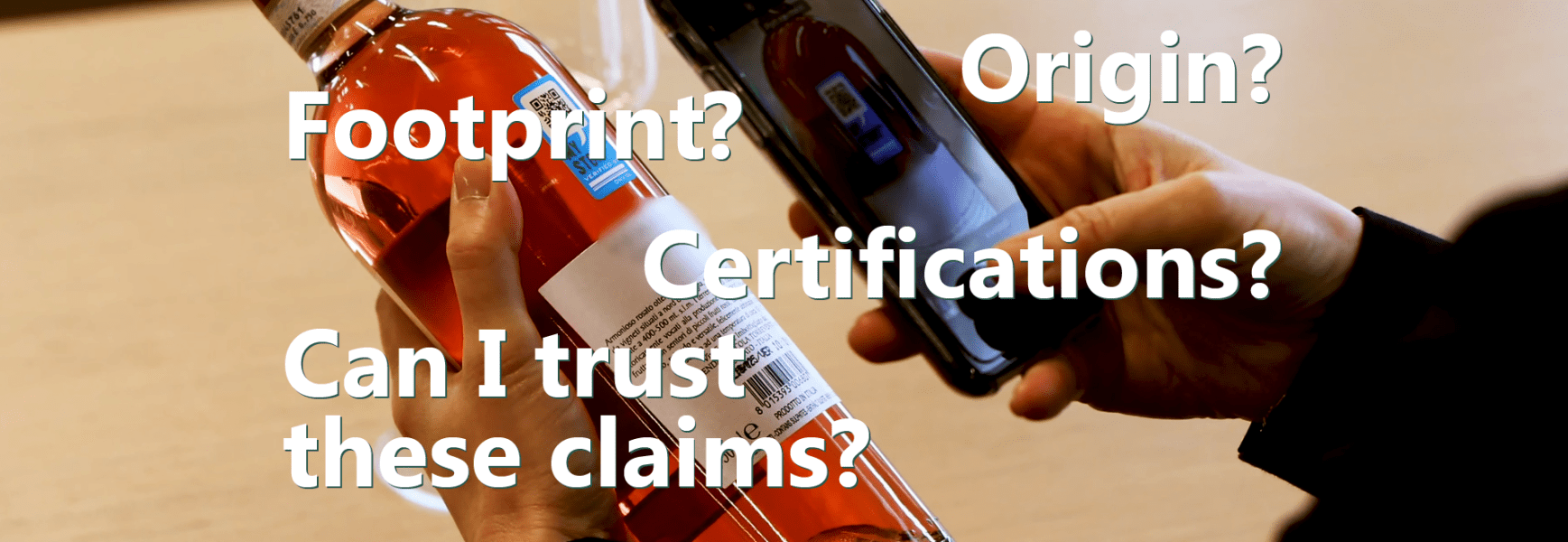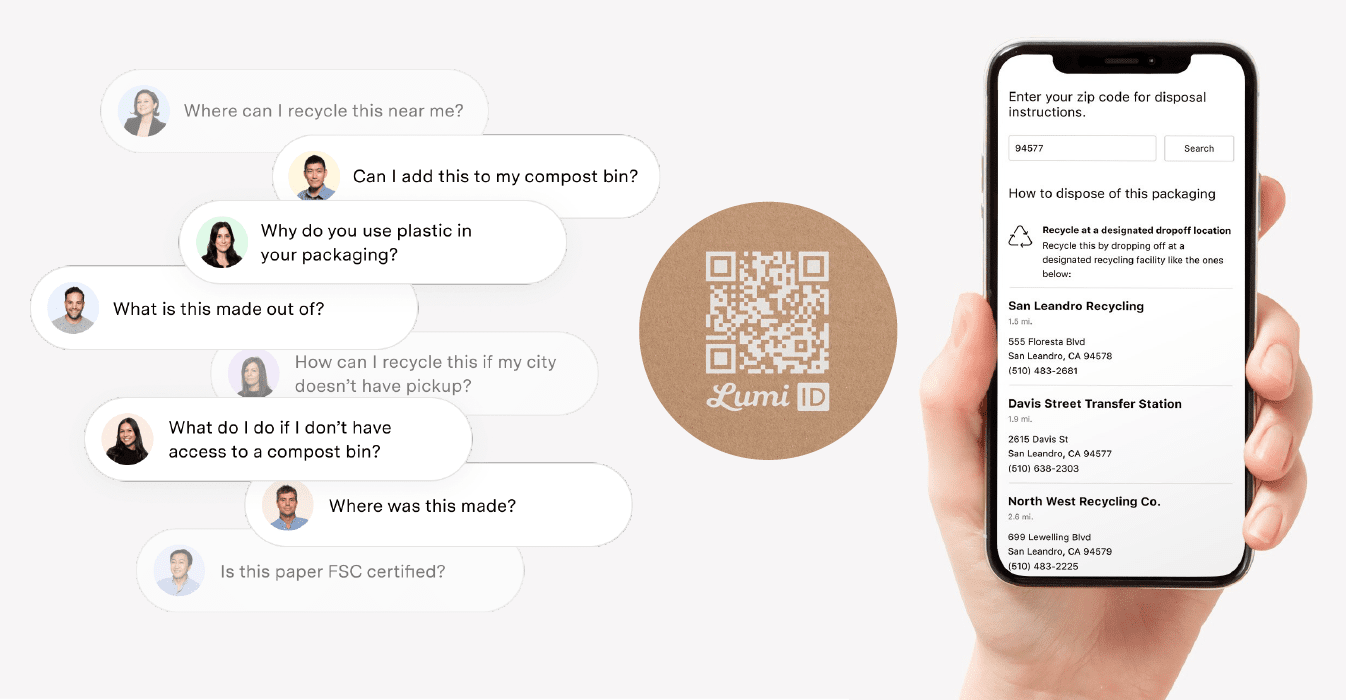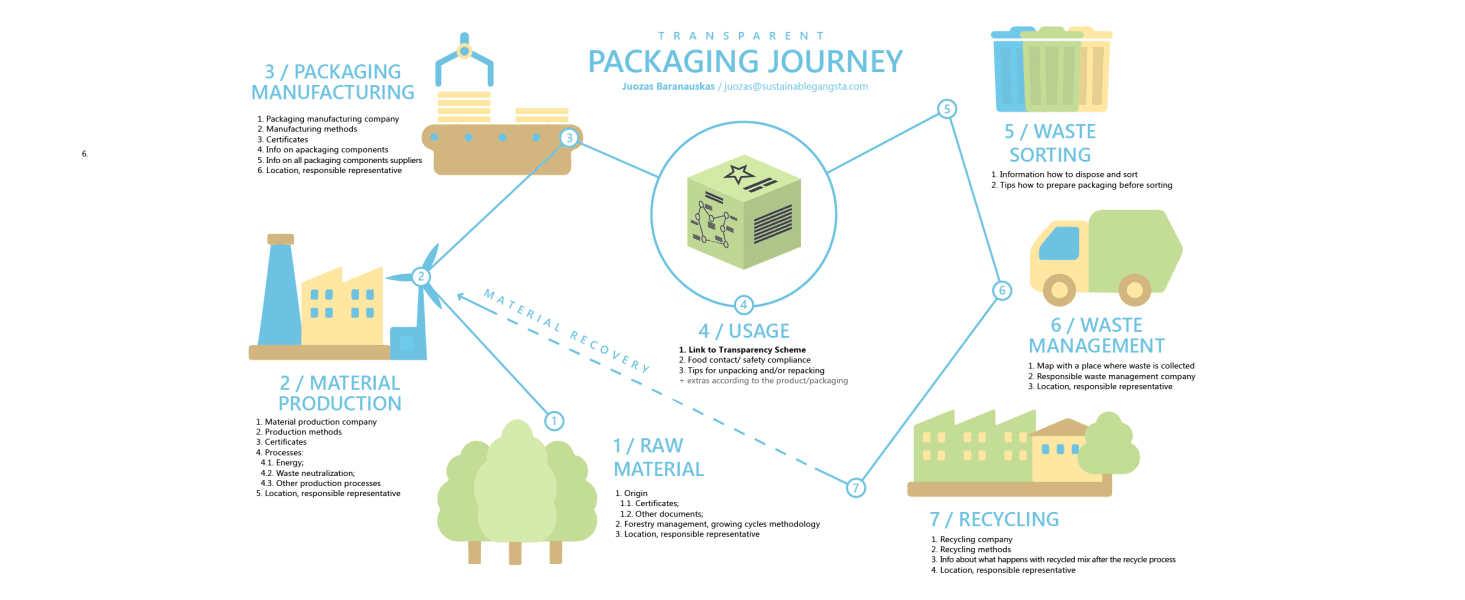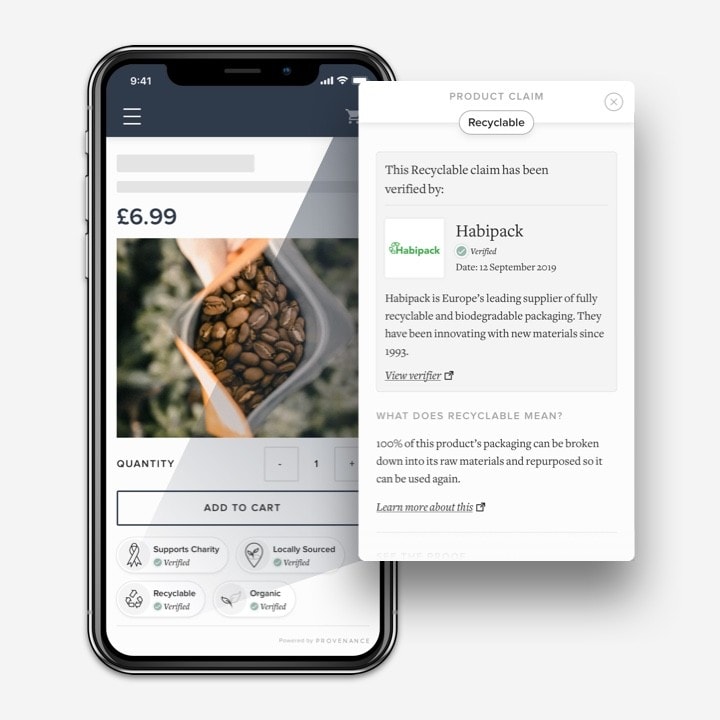Menu

Product & Packaging Transparency: Top Innovations to Follow
Last month I shared my vision on Packaging Transparency – the idea that all packaging-related information can be accessed by a customer (or any value chain actor). Article on the right.
The practice of making detailed information about products public is an evolving trend and a new thing in the packaging industry. Let’s dig deeper into this topic and check a few selected case studies, both in Product and Packaging fields.
How does Product Transparency look like?

To get a better idea of how Packaging Transparency could look like, we can start looking into how Product Transparency looks like and learn from that. Italian winemakers used My Story™ developed by DNV GL to present the whole story behind the product. Imagine that you care about the origin, quality, ecological certifications of a product and want to dig into its’ story a little bit deeper. You can reach all this information just with a scan with your smartphone and it is presentable in such a manner that you don’t need to be a wine expert to understand. Check this 1-minute video about this product.
Mission: Verified, distributed and radical Transparency
I have been following Provenance, a London based software and sustainability consultancy firm, for a couple of years. Nowadays, even for brands themselves, it is hard to know everything about their products because supply chains are long and complicated. Provenance is on the mission to change that and bring radical transparency to everyday products. Their platform gives brands the tools to make their product information transparent. The company works with brands, suppliers and third-party certifiers to make every product to come with a record of its data and journey, which is on the blockchain, a secure tamper-proof system.
The Provenance system has two levels of claims: Supported by attached evidence and Verified by independent third parties (marked by a green tick). Certifications, signed statements and even invoices can be checked by consumers in the system. This creates accountability for every claim and marketing slogan.
What excites me the most, is that you don’t need to be a big Enterprise to make your products more transparent. Provenance has monthly plans for businesses for £279 per month and even for artisans for £49 per month (these plans comes without Blockchain tracking option). The company already works with more than 200 retailers and producers in the food and drinks industry and have many other clients ranging from fashion designers to sustainable carpet producers. For more stories dig into their case studies section.
For those who want to hear more about Provenance check the interview with the founder Jessi Baker.
Transparency Innovations in the Packaging Industry
I previously knew Lumi, a packaging management platform company, as a business which creates great educational content, especially their packaging videos (for those who want to check: youtube.com/user/LumiHQ). But now I see them as innovators in their field as well, because just a two months ago they have launched Lumi ID, a digital tool that helps brands to easily inform consumers about material specifications, manufacturing details and localized disposal instructions. All this information can be reached by scanning a QR code. The same code can be used by brands to track their packed goods using their existing inventory management system.

I think this is a long-awaited improvement for the brands who want to improve communication about their transparency and sustainability efforts. With this feature brands who use Lumi’s packaging services will be able to provide simple data and inform their end-consumers about the packaging they are using and help them to dispose it without any confusion.
Since this project is brand-new, there are no case studies available to dig deeper into and discover the current advantages and disadvantages of this system. Time will tell how brands and end-customers will adopt and exploit this system and what further improvements Lumi will introduce.

Even some of the biggest brands nowadays don’t share much information about their packaging and if they do, usually the information is not systemised. Trying to change that just a month ago, on Earth Day, Lumi launched a new initiative called Slash Packaging. It is a directory of brands that created “brand.com/packaging” page on their website. This system lets citizens to easily check whether their beloved brand already dedicated a page for packaging, to reward the ones who share information and invite others to join. Just try it: https://www.slashpackaging.org/
What’s next? Can we expect that this decade we will see a rapid transition to more Transparent Product and Packaging models? Who will embrace this shift and will win? Maybe your company is already on the way?

